《PRECEDENT AND LAW DYNAMICS OF COMMON LAW GROWTH》
| 作者 | JULIUS STONE 编者 |
|---|---|
| 出版 | BUTTERWORTHS |
| 参考页数 | 289 |
| 出版时间 | 1985(求助前请核对) 目录预览 |
| ISBN号 | 无 — 求助条款 |
| PDF编号 | 813698048(仅供预览,未存储实际文件) |
| 求助格式 | 扫描PDF(若分多册发行,每次仅能受理1册) |
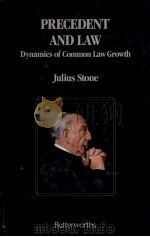
1 Appellate Courts: Books and Themes1
Ⅰ.Appellate Courts and Leeways of Choice1
Ⅱ.Leeways of Choice and Patterns of Discourse4
Ⅲ.Constitutional Review as an Appellate Function6
Ⅳ.Judicial Value-commitments and Appellate Outcomes10
Ⅴ.Ongoing Problems of Precedent Law13
2 Logic and Law: the Barrenness of Logic22
Ⅰ.Logical Analysis and Legal Analysis22
A.Logical conclusions and legal conclusions22
B.False assumptions involved when logical and legal conclusions are not distinguished24
C.The use and limits of logical compulsion26
D.Extra-legal propositions as premises from which to draw new legal propositions28
E.Non-decisive roles of logic in legal operations29
Ⅱ.Legal Analysis and Legal Growth: Leeways Within Precedential Law31
A.Leeways of choice when a particular verbal formulation is given32
B.Leeways of choice when what is given is a “case” or “precedent”32
C.Leeways in trial courts, intermediate appellate courts and ultimate appellate courts33
D.The United States Supreme Court and the ultimate appellate role40
Ⅲ.Logic in Merely Jurisprudential Discourse About Law: Law in the Light of Logic43
3 Packaging of Law: the Fertility of Language49
Ⅰ.Language is Chronically Plurisignative50
Ⅱ.Words as Symbols Have No Meaning in Themselves51
Ⅲ.Flow of Meanings in the Stream of Time52
Ⅳ.Statutory Meaning and Extrinsic Aids53
Ⅴ.Ratio Decidendi and the Semantic Nature of Judicial Discourse56
A.“A case” consists of the meaning of the judicial discourse reported in the particular decision56
B.“A case” includes (indeed, centres on) the judge’s reasons, and therefore meanings56
C.Multiple judgments multiply words and therefore meanings56
D.Do lines of successive decisions necessarily narrow the range of ratios?57
Ⅵ.Semantics and the Attribution of Meanings by Later Judges to Precedent Judges58
4 Legal Categories of Illusory Reference61
Ⅰ.Categories of Competing Reference63
Ⅱ.Single Category with Competing Versions of Reference63
Ⅲ.Category of Concealed Circular Reference65
Ⅳ.Category of Indeterminate Reference67
Ⅴ.Category of Meaningless Reference68
Ⅵ.Single Category of Concealed Multiple Reference70
Ⅶ.Conspectus of the Leeway-producing Elements Within Legal Propositions, and Within Stare Decisis74
A.Meaningless and circular categories74
B.Indeterminate or competing categories or versions74
C.Concealed multiple reference74
D.Illusory categories within the ratio decidendi notion74
E.Competing methods of seeking the ratio75
F.Competing versions of the ratio yielded by each method75
G.Openness to argument from extra-legal premises75
Ⅷ.Enhancement of Leeways of Choice by Interaction of These Illusory Elements75
Ⅸ.Respect for Logic and Limits of Logic76
A.Categories of competing reference or of competing versions76
B.Category of meaningless reference77
C.Category of circular reference77
D.Category of indeterminate reference77
5 Appellate Judicial Role81
Ⅰ.Choicemaking Necessary and Normal in Appellate Judgment81
Ⅱ.Appellate Choicemaking Proceeds Within the Framework of Traditional Materials and Techniques83
Ⅲ.Choicemaking Still Uses Precedents to Review Analogous Social Contexts83
Ⅳ.Lord Diplock on the “Methodology” of Judicial Choicemaking in the Emergence of “New Categories in the Law”85
Ⅴ.Checks on Arbitrariness (“Steadying Factors”) in Appellate Choicemaking88
Ⅵ.“Self-findelity” of the Individual Judge89
Ⅶ.Non-technical Legal Data Indispensable for Appellate Judicial Choicemaking92
Ⅷ.John Austin on Analogy, Syllogism, and “Judiciary Law”93
Ⅸ.Kinds of Reasoning Involved in This Complex Handling of Legal and Non-legal Factors in Choicemaking97
Ⅹ.Appellate Accumulation of Inconclusive Grounds and Rhetorical Reasoning99
ⅩⅠ.Rhetorical (or Dialectical) Reasoning: Scope and Operation100
ⅩⅡ.Appellate Judicial Discourse, “Reasoned Elaboration”, and Rhetorical Argument101
ⅩⅢ.Rhetorics and Precedents: Is Wisdom from Rhetorics Only by Hindsight?104
6 Judgment-Seat in Social Context109
Ⅰ.Elementary Functions of the Legal Order109
Ⅱ.“Questing” or “Aspiration” in Appellate Courts: “Law-trouble” Cases110
Ⅲ.Kinds and Contexts of Judicial Choicemaking112
Ⅳ.Judicial Self-awareness in Choicemaking: Advantages114
Ⅴ.Judicial Self-awareness in Choicemaking: Disadvantages115
Ⅵ.Computers and the Proliferation of Legal Data: the Retrieval Function117
Ⅶ.Computers: Leeways of Choice and the Judgment of Justice118
7 The Ratio Decidendi and its Inbuilt Leeways123
Ⅰ.Competing Versions of the Method of Finding the Ratio of a Case123
Ⅱ.“The Ratio Decidendi” of a Case, in so far as “the” Implies that there is One and Only One Such, is Probably a Meaningless Category124
A.What facts are “material” is an indeterminate category124
B.Indeterminacy of the level of generality at which the material facts are to fingure in the ratio127
Ⅲ.Level of Generality Problem Similarly Affects the Rule-propounded Version128
Ⅳ.Conway v Rimmer and the 1966 Practice Statement129
Ⅴ.The Plethora of Distinctions131
Ⅵ.They Distinguish, and Depart Not!133
Ⅶ.When the Precedent Has It Both Ways136
8 Lines of Precedent Extending Leeways: Remoteness and Duty Problems140
Ⅰ.Re Polemis and the Ratio of Wagon Mound No 2140
Ⅱ.What Did Wagon Mound No 1 Not Decide?141
Ⅲ.Could Wagon Mound No 2 Resurrect Re Polemis?142
Ⅳ.Foreseeability (or Remoteness) “Translated”144
Ⅴ.New Concepts in Old Guise (or New Wine in Old Bottles)145
A.“Foreseeability”145
B.“Remoteness”145
Ⅵ.“Directness” in Negligence and “Directness” in Nuisance: the Growing Leeways146
Ⅶ.The Duty Problem: “Proximity” and “Duty-situation” Tests148
Ⅷ.“Principle” Not “Definition”149
Ⅸ.The Resurgence of the “Duty-situation” Test150
Ⅹ.Leeways Before and After Dorset Yacht151
A.Situations already adjudicated151
B.Lord Atkin “proximity” situations still unadjudicated151
C.Conflicting views as to unadjudicated situations151
D.Expansion of leeways from this line of cases152
ⅩⅠ.Reasonable Foreseeability as a Duplicated Test in Several Requirements of a Negligence Suit152
9 Patterns of Appellate Judgment: Traditional and Normative156
Ⅰ.Traditional Patterns156
Ⅱ.Attribution of Meaning to Precedent Judges Central to the Traditional Patterns158
Ⅲ.“Holding Out” and “Business Context”159
Ⅳ.Traditional Attribution and Its Sociological Function161
Ⅴ.Policy-choices Concealed by Attribution162
Ⅵ.Normative Patterns of Appellate Judgment163
Ⅶ.Clarification of Policies by Normative Patterns of Judgment165
Ⅷ.Uncertainty as to the Ambit Within Which a Precedent is Binding for the Instant Facts168
Ⅸ.Normative Patterns and the Use of Standards169
10 Highest Courts Departing172
Ⅰ.The 1966 Practice Statement and the House of Lords Liberty to Depart from its Own Decisions172
Ⅱ.Criteria Justifying Departure176
Ⅲ.“Where No Precedent Binds” and Retraction of the Ratio178
Ⅳ.Competing Ratios Propounded: Which Binds?179
Ⅴ.Ratio Undermining the Statutory Function180
Ⅵ.Purgatories of the Ratio Decidendi181
A.Evils of the two purgatories182
B.“Artificial” distinctions as evils182
C.The double ratio of the “disapproving” but “not-overruling” judge182
D.Competing ratios for later courts183
E.Relation to “traditional” (“exegetic”) and “normative” patterns of appellate judgment183
Ⅶ.Checklist of Factors Relevant to the Choice: Overrule? Or Follow? Or Distinguish? in the Lower Purgatory183
A.Ratio ambit of disapproved precedent184
B.Expectations threatened by overruling or distinguishing184
Ⅷ.Stare Decisis and Decisions on Policy185
Ⅸ.Prospectivity and the Temporal Dimension of Stare Decisis186
A.Overruling, stare decisis and prospectivity186
B.Classical view that all judicial rulings and overrulings operate retrospectively on earlier facts later litigated187
C.Relation to the dual function of appellate decisionmaking188
D.Conflicting justice and policy elements involved in prospectivity189
E.Overrulings favouring the accused in criminal cases189
F.Overrulings in areas of law which are the bases of voluntary transactions, or of official action190
G.Extent to which retroactivity of judgments is unavoidable as a practical matter191
H.Variants of prospective overruling192
J.Prospectivity, separation of powers and the United States Constitution, Article Ⅲ193
11 Departing Courts: the Hierarchy Connection197
Ⅰ.Precedential Ambit and Precedential Hierarchy197
Ⅱ.Relation of Precedential to Appellate Hierarchy198
Ⅲ.Illusory References Within the Per Incuriam Notion202
Ⅳ.Precedential Authority and Substantive Outcomes203
Ⅴ.Miliangos: Pyrrhic Victory for Hierarchy204
Ⅵ.“Fresh Considerations” and When It Is “Right to Depart”209
Ⅶ.Factors Relevant to Departure210
Ⅷ.Substantive Affirmations and Precedential Rebukes211
Ⅸ.“A Court of All the Talents” and the Power of Correction212
Ⅹ.Hierarchy, Point and Counterpoint214
12 Precedent and Legal Growth: a Stocktaking219
Ⅰ.Prospective Overruling and Appellate Judgment219
Ⅱ.Where Law and Logic Do Not Compel220
Ⅲ.Aptness of Premises and Legal Conclusions223
Ⅳ.Fertility of Language and Judicial Choicemaking225
Ⅴ.Precedents Widening Leeways227
Ⅵ.Leeways Within the Ratio Decidendi Notion228
Ⅶ.Patterns of Judgment and Steadying Factors233
13 Tradition and Challenge in the 1980s236
Ⅰ.Traditionalist Revivals?236
Ⅱ.Supposed Trend from “Principles” to “Pragmatism”237
Ⅲ.Rules, Principles and Pragmatism238
Ⅳ.The “Age of Principles”?243
Ⅴ.“Principles” and Changing Demands, Power and Values244
Ⅵ.“Pragmatism” and “Result-orientation”: Twice-named Vice?247
Ⅶ.When is Result-orientation Not Legitimate?248
Ⅷ.Result-orientation and Appellate Leeways of Choice250
Ⅸ.Result-orientation Inter Partes251
Ⅹ.The Ways of Judges with “Principles”254
ⅩⅠ.Non-justiciability, Policy and Principles259
ⅩⅡ.Australian Interlude263
ⅩⅢ.Inbuilt Resources for Common Law Growth268
Selected Publications279
Index281
1985《PRECEDENT AND LAW DYNAMICS OF COMMON LAW GROWTH》由于是年代较久的资料都绝版了,几乎不可能购买到实物。如果大家为了学习确实需要,可向博主求助其电子版PDF文件(由JULIUS STONE 1985 BUTTERWORTHS 出版的版本) 。对合法合规的求助,我会当即受理并将下载地址发送给你。
高度相关资料
-
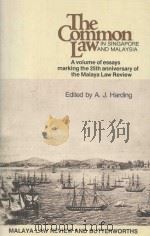
- THE COMMON LAW IN SINGAPORE AND MALAYSIA
- 1985 BUTTERWORTHS
-

- THE DYNAMICS OF INTERNATIONAL LAW
- 1976 PROFESSIONAL BOOKS LIMITED
-
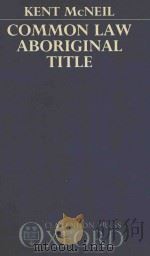
- Common law aboriginal title
- 1989 Clarendon Press
-
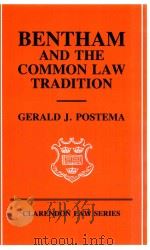
- Bentham and the Common Law Tradition
- 1986 CLARENDON PRESS OXFORD
-
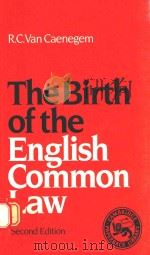
- THE BIRTH OF THE ENGLISH COMMON LAW
- 1988 CAMBRIDGE UNIVERSITY PRESS
-
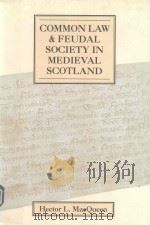
- COMMON LAW AND FEUDAL SOCIETY IN MEDIEVAL SCOTLAND
- 1993 EDINBURGH UNIVERSITY PRESS
-
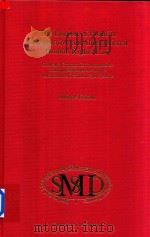
- The Burden of Proof in Comparative and International Human Rights Law Civil and Common Law Approache
- 1998 Kluwer Law International
-
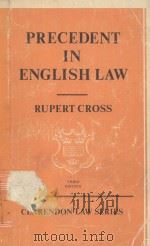
- PRECEDENT IN ENGLISH LAW THIRD EDITION
- 1977 CLARENDON PRESS·OXFORD
-
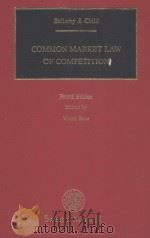
- COMMON MARKET LAW OF COMPETITION FOURTH EDITION
- 1993 SWEET & MAXWELL
-
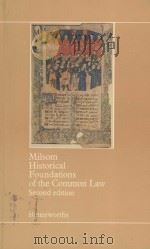
- HISTORICAL FOUNDATIONS OF THE COMMON LAW SECOND EDITION
- 1981 BUTTERWORTHS
-
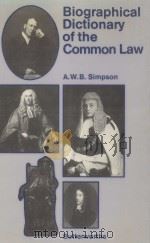
- Biographical dictionary of the common law
- 1984 Butterworths : Mason Pub. Co.
-
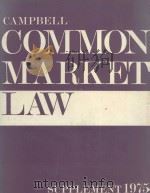
- COMMON MARKET LAW SUPPLEMENT 1975
- 1975 OCEANA PUBLICATIONS INC.
-

- COMMON LAW OF EUROPE CASEBOOKS TORTS SCOPE OF PROTECTION
- 1998 HART PUBLISHING OXFORD
提示:百度云已更名为百度网盘(百度盘),天翼云盘、微盘下载地址……暂未提供。➥ PDF文字可复制化或转WORD

